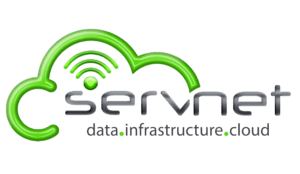Building a Private Cloud: A Beginner’s Guide
In today’s world, businesses are increasingly turning to private clouds to fuel their digital transformation journey.
As opposed to public clouds, private clouds offer enhanced security, greater control, and more flexibility, making them an ideal option for companies grappling with data privacy and compliance issues. However, the idea of building a private cloud infrastructure can be daunting, especially for those who are new to cloud computing. In this blog post, we’ll take a step-by-step approach to building a private cloud that will enable you to harness the power of the cloud while maintaining full control over your data.
1. Establish Your Cloud Objectives
Before you begin building a private cloud, it’s important to establish your cloud objectives. You should clearly define your goals, including the specific services you want to offer and the level of infrastructure your cloud will require. Do you want to run virtual machines or containers? Will your cloud interface with an existing IT infrastructure or does it need to be built from scratch? Understanding what you want to achieve will help you make informed decisions about the hardware, software, and configuration needed to build your cloud.
2. Assess Your Infrastructure
The next step is to assess your infrastructure. Building a private cloud requires a significant amount of computing power, and your existing infrastructure may not be sufficient. The ideal scenario is to have dedicated hardware for your cloud, but if that’s not possible, you can opt for a hybrid cloud architecture that uses both public and private clouds. You’ll also need to ensure that your network is capable of handling the increased traffic and latency that come with cloud computing. If you’re unsure about your infrastructure, consult with an experienced cloud provider to assess your needs.
3. Choose Your Cloud Platform
Once you’ve established your objectives and assessed your infrastructure, it’s time to choose your cloud platform. There are several options available, each with its own set of benefits and drawbacks. OpenStack, for example, offers a free and open-source platform that is highly customizable and scalable. VMware offers a range of private cloud solutions that integrate with existing VMware infrastructure. Microsoft Azure offers a range of private cloud services that can be integrated with existing Microsoft applications. It’s important to choose a platform that fits your specific needs and requirements.
4. Configure Your Cloud
Configuring your cloud involves setting up servers, storage, and network resources. You’ll need to create templates for virtual machines or containers, provision storage, and set up networks to enable communication between applications running in your cloud. This can be a complex process, and it’s important to take the time to plan and test your configuration before going live. Schedule regular backups and disaster recovery exercises to ensure your cloud remains highly available and secure.
5. Monitor and Manage Your Cloud
Once your cloud is up and running, you’ll need to monitor and manage it to ensure optimum performance. Utilize monitoring tools to detect performance bottlenecks, manage resource allocation, and check for intrusion attempts. Continuous configuration management will help you streamline the ongoing maintenance of your cloud, while automated scaling will ensure that resources are allocated efficiently, enabling you to focus on core business tasks.
Conclusion
Building a private cloud can be complex, but with careful planning and execution, it can be a highly successful endeavour that enables your business to leverage the power of the cloud while maintaining full control over your data. Understanding your goals, assessing your infrastructure, choosing the right platform, configuring your cloud, and monitoring and managing your cloud are all essential steps in building a robust and scalable private cloud that will power your digital transformation journey.
For more information please visit our Cloud Solutions Page











